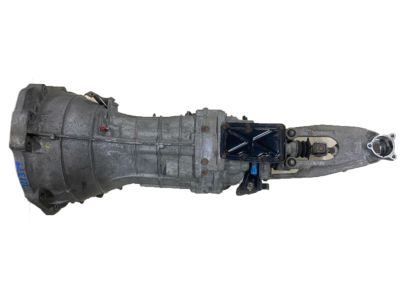×
- Hello
- Login or Register
- Quick Links
- Live Chat
- Track Order
- Parts Availability
- RMA
- Help Center
- Contact Us
- Shop for
- Nissan Parts
- Nissan Accessories

My Garage
My Account
Cart
Genuine Nissan 350Z Transmission Assembly
Trans Assembly- Select Vehicle by Model
- Select Vehicle by VIN
Select Vehicle by Model
orMake
Model
Year
Select Vehicle by VIN
For the most accurate results, select vehicle by your VIN (Vehicle Identification Number).
14 Transmission Assemblies found

Nissan 350Z Manual Transmission
Part Number: 32010-CD009$2708.61 MSRP: $3279.19You Save: $570.58 (18%)Ships in 1-3 Business DaysNissan 350Z Manual Transmission
Part Number: 320B0-JK41B$2631.05 MSRP: $3185.29You Save: $554.24 (18%)Ships in 1-2 Business DaysNissan 350Z Blank Automatic Transmission
Part Number: 310C0-3EX7A$5316.43 MSRP: $6436.36You Save: $1119.93 (18%)Ships in 1-3 Business DaysNissan 350Z Manual Transmission
Part Number: 32010-CD008$2708.61 MSRP: $3279.19You Save: $570.58 (18%)Ships in 1-3 Business DaysNissan 350Z Blank Automatic Transmission
Part Number: 31020-93X1A$5002.11 MSRP: $5905.67You Save: $903.56 (16%)Ships in 1-2 Business DaysNissan 350Z Blank Automatic Transmission
Part Number: 31020-92X2B$6424.30 MSRP: $7777.60You Save: $1353.30 (18%)
Nissan 350Z Transmission Assembly
If you need any OEM Nissan 350Z Transmission Assembly, feel free to choose them out of our huge selection of genuine Nissan 350Z Transmission Assembly. All our parts are offered at unbeatable prices and are supported by the manufacturer's warranty. In addition, we offer quick shipping to have your parts delivered to your door step in a matter of days.
Nissan 350Z Transmission Assembly Parts Questions & Experts Answers
- Q: How do you remove and reinstall a manual transmission on Nissan 350Z?A:To eliminate the transmission, beforehand, unplug the cable from its negative terminal, and engage the transmission to the NEUTRAL position. Chock the wheels, and then lift the car higher and suspend it on jackstands safely. Depending on the car, it may be necessary to remove the shift linkage from the transmission or pull the driveshaft ; the clutch hydraulic line will also need to be unplugged. First, you should disconnect the starter motor and then, disconnect the electrical connectors of the upstream and the downstream oxygen sensors. Remove the left and the right catalytic converters from exhaust manifolds and unfasten the catalytic converter Y-pipe: also remember to take the crossmember-like brace that the mentioned converters are installed with. Remove the crankshaft position sensor, and loose the connectors connected to the back-up light switch and PNP switch. Place the jack at the base of the engine and for the protection of the Oil Pan use a wooden plank between the jack head and the engine. Place the supporting jack near the transmission, it can be a transmission jack or bulk floor jack with safety chains fastened. Jack up the transmission a little bit to take the weight off the crossmember: then remove the transmission crossmember, and nuts and bolts that hold the mount to the transmission. Disconnect the bolts threading through the engine to transmission interface, as well as the bolts connecting the transmission to the engine, and decrease the jack for better access to the upper bolts. All connections to the transmission must be disconnected, then the transmission together with the jack should be shifted towards the rear side of the car until the input shaft comes out of the clutch. If so, with the help of a prybar place it to take the transmission away from the engine and, at the same time, still resting on the stand. When the components are identified, shift down the transmission and withdraw it from beneath the car without applying pressure to the clutch pedal. The clutch components should be inspected, and new ones should be put if any is worn. Here, a thin layer of high-temperature grease should be applied to the splines of the transmission input shaft together with the inside of the pilot-bearing. Having ensured the transmission is fitted on the jack, raise it to a position above the engine then hood it in a manner that the input shaft mates with the outer circumference of the clutch plate hub without applying undue force on the gear. After bringing the surfaces to be bolted to sit against the grooves of the other, screw and tighten the transmission-to-engine bolts while turning the engine until the right torque is achieved, do not bring the bolts to force the two to engage. Next, fit the transmission mount and cross member and after that, tighten all the nuts and bolts to the recommend torque. The jacks holding the transmission and the engine should be removed before the various parts that were removed earlier can be refitted. Make sure all of the wires and hoses have been connected and that some or all of the transmission is filled with some lubrication before reinstalling the car. Connect the shift linkage and the negative battery cable back together, than take the vehicle out for a road test for any leaking and check that the shifter works through all the gears properly.















